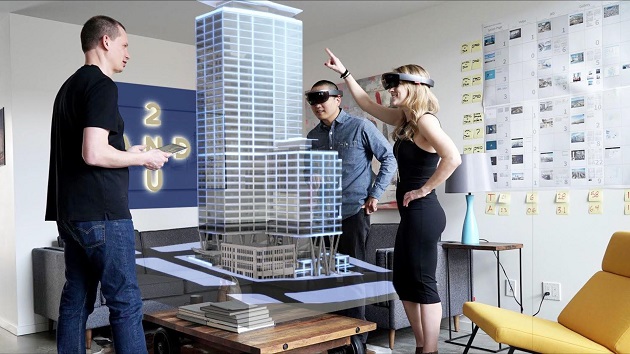With Computex Taiwan underway this week there’s been a big push towards virtual reality (VR) and augmented reality (AR) products by companies in attendance. One of biggest names there is, Microsoft, with the company promoting Windows Holographic. The platform powers the HoloLens mixed reality (MR) head-mounted display (HMD) and now Microsoft is inviting its Windows 10 hardware partners to develop devices with the platform.
With this opening up of Windows Holographic, Microsoft wants to create an immersive world where everything can connect together through Windows 10, as different user interfaces, interaction models, input methods, peripherals and applications don’t all seamlessly work with one another.
Windows Holographic offers a holographic shell and user interface, perception APIs, and Xbox Live services. Universal Windows apps can run on the Windows Holographic platform and currently there are nearly a thousand Universal Windows Apps that run on Windows Holographic.
“With Windows 10, we’ve been on an incredible journey with our partners, and today we usher in the next frontier of computing — mixed reality,” said Terry Myerson, executive vice president, Windows and Devices.
While Microsoft is laying the groundwork for future MR/AR technology, for consumers getting their hands on devices like HoloLens will take time. The HMD is currently only available to developers based in the US or Canada, and with a price tag of $3000 USD, its well above a consumer centric price point.
Microsoft’s working with Intel, AMD, Qualcomm, HTC, Acer, ASUS, CyberPowerPC, Dell, Falcon Northwest, HP, iBuyPower, Lenovo, MSI and more to develop VR/AR and MR experiences. This may also pave the way for more open knowledge sharing, so that partners can build their own MR device, similar to Google’s open reference policy for its Daydream headset, who knows.
Figures are being thrown about that the market for VR products could hit 80 million devices per year by 2020, if so VRFocus will be very busy bringing you all the latest news just as we do now.















